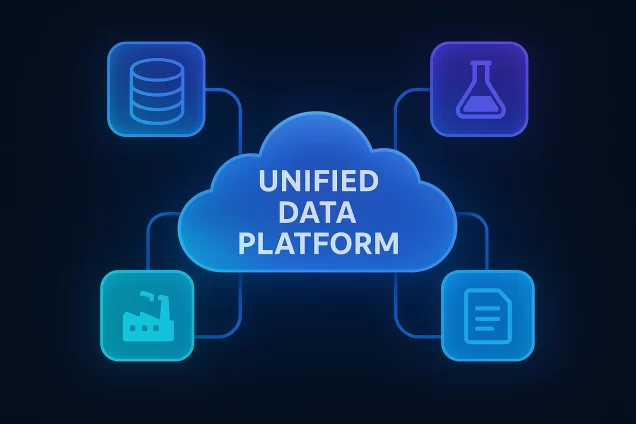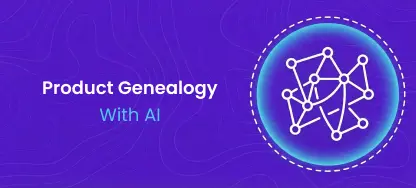Summary: Pharmaceutical audits often involve days of scrambling through siloed systems for batch records, deviation reports, and quality data. A unified data platform like Mareana connects MES, LIMS, and QMS, providing a single source of truth with real-time product genealogy, instant material traceability, and tamper-proof audit trails. This not only cuts audit prep time to minutes but also enables risk-based auditing, proactive issue detection, and continuous proof of compliance.
An audit notice arrives, and the clock starts ticking. For many pharmaceutical manufacturing teams, the immediate aftermath is a flurry of activity: pulling batch records, searching for deviation reports, and attempting to reconcile data across multiple, disconnected systems. This reactive, manual process is not only stressful and inefficient but also carries the risk of human error and regulatory citations. The core problem isn’t the audit itself—it’s the lack of a unified data platform to support it. The key to moving from this last-minute scramble to a state of effortless audit readiness lies in data connectivity.
A unified data platform eliminates the need for manual data retrieval by creating a single source of truth for all manufacturing and quality data. It seamlessly connects disparate systems, from the shop floor’s MES to the laboratory’s LIMS and the quality department’s QMS. This integration allows for a clear, real-time picture of every process and product. Auditors can see the complete lifecycle of a batch, including raw material traceability, in-process testing results, and final product release records, all from a single dashboard. This streamlined process can drastically reduce the time spent on audit preparation, leading to significant operational efficiencies.
How Does Data Connectivity Enable a Risk-Based Auditing Strategy?
Beyond simply speeding up the process, a unified data platform enables a more intelligent, risk-based approach to auditing. A risk-based approach is the one where the frequency and depth of an audit are determined by identified risks. But how do you accurately identify those risks? The answer lies in connected data. By consolidating data from various sources, a platform like Mareana can use advanced analytics to spot anomalies or trends that might indicate a potential quality issue. For example, it might identify a subtle shift in a process parameter that, while still within specification, is trending towards the upper limit. This insight allows a company to proactively investigate and take corrective action before a deviation occurs, preventing a potential product recall and regulatory scrutiny.
Mareana provides a robust foundation for managing deviations, investigations, and CAPA. It collects, harmonizes, and makes the data accessible from a single point, so that you can extract any kind of audit-related information instantly. This approach means that an audit becomes less about proving compliance from a static snapshot in time and more about demonstrating a continuous, living system of quality.
What Specific Capabilities Make Audits Faster?
The real-world value of a unified platform is most evident during the audit itself. An auditor’s primary goal is to verify that a product was made correctly and that all quality standards were met. With a connected platform, this verification becomes instantaneous. The auditor can instantly access a tamper-proof audit trail for any process. Data that would have previously required hours of manual searching—such as the calibration records for a specific piece of equipment during a particular production run—is now a few clicks away. This level of data transparency and accessibility is a game-changer.
The below video demonstrates a scenario of an audit where an auditor flags a material in your production. You can get your product genealogy (which is an AI generated, real-time, visual representation of your entire manufacturing process). Then you can select the material to find out which products were impacted by it. The genealogy will provide you all the information associated with the material, including the data from LIMS and paper batch records, which you can download and share with the auditor as a proof of quality. Additionally, you can check all the trends related to the material, like titler results, assay results, acidity distribution, etc. Watch the video for more details.
Conclusion
Audits don’t have to be a source of anxiety and inefficiency. By moving beyond disconnected legacy systems and embracing a unified data platform, pharmaceutical manufacturers can transform their audit processes from a burdensome necessity into a demonstration of operational excellence. The ability to connect data, enabling real-time visibility and a risk-based approach, is the key to faster, more efficient, and more effective audits. This shift not only saves time and resources but also strengthens a company’s commitment to quality and patient safety, securing a competitive advantage in a complex global market.
Learn how Mareana’s connected platform helps you achieve a new level of audit efficiency. Request a demo now.
Frequently Asked Questions (FAQs)
-
What is a unified data platform in pharmaceutical manufacturing?
A unified data platform is an integrated system that connects various manufacturing and quality data sources—such as MES (Manufacturing Execution System), LIMS (Laboratory Information Management System), and QMS (Quality Management System)—into a single, centralized source of truth.
-
How does a unified data platform reduce audit preparation time?
By centralizing and harmonizing data from different systems, a unified platform eliminates manual data retrieval. This enables instant access to complete, tamper-proof audit trails, cutting audit preparation time from days to minutes.
-
What is a risk-based auditing strategy, and how does data connectivity support it?
A risk-based auditing strategy prioritizes audits based on identified risks rather than a fixed schedule. Connected data allows advanced analytics to detect anomalies and trends, enabling proactive action before issues escalate.
-
How does Mareana’s platform help during an audit?
Mareana provides a real-time, AI-generated product genealogy that visualizes the entire manufacturing process. This allows auditors to instantly trace materials, review related lab results, and download supporting documentation for quality verification.
-
Can a unified data platform help prevent regulatory issues?
Yes. By providing continuous visibility into production processes and highlighting potential deviations early, a unified platform helps prevent compliance issues, product recalls, and regulatory citations.
-
What kind of data can auditors access through a unified platform?
Auditors can instantly view calibration records, raw material traceability, in-process testing data, batch release documents, deviation reports, and more—all from a single dashboard.
-
Is a unified data platform only useful during audits?
No. While it significantly streamlines audits, it also enhances day-to-day operations, improves quality management, supports CAPA (Corrective and Preventive Actions), and strengthens overall regulatory compliance.
-
How does real-time product genealogy improve audit efficiency?
Product genealogy visually maps the entire manufacturing process, linking each product to its materials, lab results, and quality records. This visual traceability speeds up issue identification and evidence retrieval during audits.
-
Does implementing a unified data platform require replacing existing systems?
No. Many platforms, like Mareana, integrate with existing MES, LIMS, and QMS systems to unify data without replacing your current infrastructure. It acts as an added layer of intelligence over your existing data sources.
-
How is Mareana’s platform different than traditional data management in Pharma Manufacturing?
Here is a comparison between Mareana and the legacy system.
Aspect Legacy Disconnected Systems Mareana Unified Data Platform Data Integration None or Minimal Full Integration across LMS, MES, QMS Audit Trail Manual Logs Automated, Tamper-Proof Product Genealogy Incomplete or Not Available Real Time, AI-generated Visual Genealogy Material Traceability Fragmented and Manual Instant and Comprehensive Audit Readiness Requires Preparation and Scrambling Ready in Minutes with a few clicks Data Analytics Limited Predictive and Trend Based Analytics




 Learn more
Learn more



